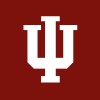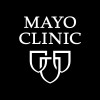
Massive Burns: Retrospective Analysis of Changes in Outcomes Across 18 Years
BurnsBurns treatment and management has evolved since the 90s, particularly for massive burns (≥ 50% of total body surface area (TBSA)). This study aims at analyzing the impact of the management changes on the length of intensive care unit (ICU) stay, the take of skin grafts and the mortality.

The Treatment Challenges and Limitation in High-Voltage Pediatric Electrical Burn at Rural Area...
BurnsElectrical Burn2 moreA case of high-voltage pediatric electrical burn involving a fully conscious 13-year old boy who was admitted to the emergency room after being electrocuted by high-voltage power cable, with superficial partial thickness burn over right arm, trunk, and left leg (26% of total body surface area) with cardiac abnormality e.g. tachycardia and non-specific ST depression. Treatments were based on Australian New Zealand Burns Association algorithm with several modifications, i.e. administering lower concentration of oxygen with nasal cannula instead of non-rebreathing mask and intravenous Ketorolac and Metamizole as analgesic instead of morphine due to limitation in infrastructure and knowledge. The patient underwent surgical debridement and strict observation with no signs of abnormality found during hospital stay. Wound dressing consisted of silver sulfadiazine, Sofra-tulle® and dry sterile gauze were used until epithelialization. After the wound healed, the patient resumed wearing elastic bandage and moisturizer on the wound area. The patient was observed daily through 7 days of hospitalization and followed-up for 1 year, achieving normal physiologic function of the affected area but unsatisfactory esthetic result. This case report showed that there is still a lack of burn prevention programs in the rural area, resulted in inadequate first aid application for electrical burn. There is a need for acknowledging and maximizing the implementation of available standardized guidelines e.g. Australian New Zealand Burns Association by giving homogenized training to personnel as well as providing feasible equipment, and then followed by strict monitoring for the patient. The focus of the burn program should also include burn rehabilitation, psychosocial needs and any complaints needing expert opinion in an outpatient setting in addition to adequate burn management for life saving and good wound healing.

Analysis and Accuracy of Mortality Prediction Scores
BurnsMoralityPatients admitted to the ICU in a tertiary burn centre in Kuwait were analysed using multiple mortality prediction scores. The accuracy of these scores were compared to each other to ascertain which prediction modality provides the most accurate prognosis.

Use of NexoBrid for Treatment of Acute Deep Partial and Full Thickness Burn Injuries
Thermal BurnEnzymatic eschar removal with NexoBrid allows initiating and completing the phase of removal of the offending eschar earlier upon admission, enabling earlier visualization of the wound bed for assessment of burn wound depth as well as preservation of viable dermal tissues, as further elaborated and supported by previous clinical studies. The depth determination is important for the planning and execution of the post eschar removal stage of wound closure phase (grafting or spontaneous epithelialization). Additional clinically meaningful attributes of NexoBrid enzymatic eschar removal is the ability to lower surgical burden as it allows to remove eschar in wounds that otherwise would have to undergo surgical excision as no other non-surgical treatment is available for early and effective eschar removal. MediWound has completed the recruitment of patients to study MW2010-03-02 (DETECT Study). The timeline for patients' follow-up and potential for approval in 2021/2022, creates a significant gap in the ability of clinical practitioner's to maintain their knowledge and skills in using NexoBrid as they no longer treat eligible patients. The expanded access protocol will allow to expand treatment to additional patients in up to 30 US burn centers (DETECT sites and additional sites), until the completion of the BLA assessment and possible marketing authorization of NexoBrid in the US. The proposed protocol will allow product availability to eligible population and keep the clinical use of the product knowledge active in the burn care community introducing it to their routine burn care. The purpose of this treatment protocol is to provide NexoBrid to patients with DPT and FT thermal burns on up to 30% TBSA. This protocol is also designed to collect and evaluate the safety and clinical performance of NexoBrid in this patient population.

AutoMated BUrn Diagnostic System for Healthcare (AMBUSH)
Burns MultipleBurns2 moreThe primary objective of this study is to develop a high accuracy and automated system that can provide early assessment of burn injuries with at least 90% accuracy in absence of burn experts, using AI and FDA cleared harmonic ultrasound TDI data based on the analysis of mechanical and hemodynamic properties of the subcutaneous burned tissue. Data collected in this study will lead to the development of better diagnostic tools that could inform clinical burn practices by enabling doctors to determine burn depth and the need for surgery with greater speed and accuracy, resulting in better clinical outcomes.

The Relationship of Rehabilitation Therapy Time To The Prevention of Burn Scar Contracture
BurnsThis project will develop a descriptive database of patient information and patient outcomes. This database will be used to determine the association of time spent in rehabilitation and patient outcomes, to relate patient acuity to burn scar contracture development and to establish minimal time requirement guidelines for various rehabilitation patient outcomes.

A Qualitative and Quantitative Analysis on the Living History of Survivors From Charcoal-burning...
SuicideThe current study aims to explore the risk factors, protective factors, resilient factors, and factors jeopardizing the recovery progress on survivors from charcoal-burning suicide. To this end, an in-depth individual interview and Mini-Mental State Examination(MMSE) will be used to acquire the first-hand information on the attempters. As well, a more comprehensive neuropsychological test, WAIS III, will be administered at 3-month, 6-month, and 12-month after the index suicide attempt.

Alpha Lipoic Acid for Burning Mouth
Burning Sore MouthDiscussion and evaluation of patients with sore and burning mouth to determine whether alpha lipoic acid is helpful in managing their symptoms.

Study of Fibrinogen Metabolism During Severe Trauma and Burns
Burn InjuryMajor TraumaTo study the fibrinogen metabolic changes in relation to coagulation disorder in patients with severe burns and trauma injuries. As a result of the burn or trauma injury breakdown of fibrinogen is accelerated.

Central Venous Catheter Replacement Strategies in Patients With Acute Burn Injury
BurnsThis project proposes to answer the following questions: To determine the incidence of infection with three primary schedules of central venous catheter exchange in pediatric burn patients and to determine the regimen that will minimize infectious risk in children with burns. The scientific knowledge to be acquired through this project is of likely benefit to the care of children with orthopaedic problems, spinal cord injuries or burns as follows: The intention is to improve the outcomes in burned children by minimizing one of the most frequent causes of infection in the burn intensive care unit, those from central venous catheters. Decreasing infections will decrease morbidity, decrease length of stay, decrease costs, and decrease mortality in burned children
